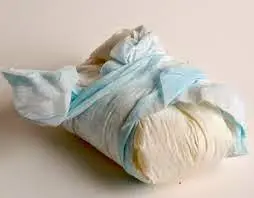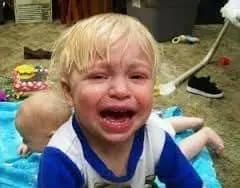There’s a great deal of debate between cloth diaper and disposable diapers advocates. As a mother who has made the personal choice to use disposable diapers I was a bit insulted when cloth-using parents suggested I was harming my baby’s health. I set out to make this an unbiased look at the health issues associated with diapers, however when you look at the disposable-cloth diaper debate most the stones are thrown at one side. This article will still be an unbiased look. It will still present the actual studied, confirmed facts on each claim made, unfortunately since most the claims are made from the cloth diaper side it may seem as if this article is biased and defending disposable diapers. On the contrary this article is meant to remove propaganda and fear tactics and provide parents with the facts so they can decide which type of diapers to use on their own based on those facts alone without being convinced a decision based on personal preference could negatively affect their baby’s health, whichever diaper that decision leads them to.
Health risk claims for Cloth and Disposable Diapers:
Health risk claim: Disposable diapers contain dioxin.
This health risk claim does contain some truth. It is not untrue that disposable diapers contain trace amounts of dioxin. Dioxin is a toxin produced during the paper-bleaching process that can have negative effects on reproductive, developmental, and immune function as well as increases the risk of cancer. The usually unmentioned truth to this disposable diaper health risk is that dioxin is present in a great deal of sanitary items such as tampons and upwards of 95% of human exposure is through food not diapers, tampons, or other items containing trace amounts. Furthermore studies performed on cotton cloth diapers produced even higher trace levels of dioxin than disposables. In the end, levels in both cases were not significant enough to contribute to dioxin exposure or to create long-term health effects.
Health risk claim: Disposable diapers contain Tributyltin (TBT).
Tributyltin was found in the year 2000 in Pampers Baby Dry, Paul Hartmann Company’s Fixies Ultra Dry, and Ledysan Spa’s United Colours of Benetton Junior unisex disposable diapers. No other brands are known or mentioned to contain tributyln which is a hormonal pollutant that can cause health issues in humans. In 2001, the Institute of Textile Technology reported that there were no health risks to babies from levels of tributyltin present in these brands.
Health risk claim: Disposable diapers contain sodium polyacrylate.
Sodium polyacrylate is a type of super-absorbent polymer (the gel like substance you may see in a disposable diaper when extremely wet) used to make disposable diapers hold more liquid without leaking. Sodium polyacrylate was previous removed from tampons due to causing a bacterial illness called toxic shock syndrome. However, toxic shock syndrome was caused by sodium polyacrylate being placed within the body for extended time periods. External exposure such as that in diapers is not known to cause any health issues. This is because toxic shock could be prevented even in tampon use with regular replacement. Sodium Polyacrylate simply creates a breeding ground for bacteria. As long as disposable diapers are changed soon after becoming dirty no more risk is present than with that of a cloth diaper.
Health risk claim: Disposable diapers overheat the genitals of baby boys.
Studies have confirmed that higher temperatures of the scrotum can decrease sperm count and may increase the risk of testicular cancer, however studies also show that cloth diapers used with the usual protective coating created the same temperatures as disposable diapers. In both cases, these temperatures did not exceed maximum scrotal temperatures and are no worse than an adult wearing underwear and pants. The exception was in boys that had soiled themselves and were not changed quickly.
Health risk claim: Disposable diapers cause an increased occurrence of diaper rash in infants.
This is actually a disposable diaper myth, studies done in 2006 actually showed that disposables decrease the risk of diaper rash. Claims that cloth and disposables cause diaper rash at an equal rate are also unsupported. Rates of diaper rash were found as follows with the different types of diapers: cloth with plastic outer cover 60%, cellulose disposables 39%, absorbent gel disposables 29%, absorbent gel disposables with breathable covers 13%. Diaper rash percentiles for uncovered cloth diapers were not presented. Rates of diaper rash, in any case, can be reduced with frequent and prompt changing.
Health risk claim: Cloth diapers are unsanitary and can cause infections.
I was unable to find any supported sources on either side of this issue which leaves me to believe there have been none. Anyone who knows of any (actual studies I do not want cloth diaper supporting pages with no citation, etc.) please leave them in the comment section. The closest “study” found that cloth diapers after being washed properly had no more bacteria than other clothing we place on our babies every day. I am inclined to agree, however this article is about fact not belief so this claim will be left in “unknown” status.
Health risk claim: Disposable diapers cause asthma.
There was indeed a study done in 1999 that confirmed that mice showed more extreme asthma like symptoms when exposed to disposable diapers. (It should be noted cloth diapers also presented “small changes.”) Russ Rader (U.S. Consumer Product Safety Commission Spokesman) states that these results have yet to be seen in humans. It was said the study was being sent to a toxicologist but no newer information can be found. Previous tests on torn open disposables with the inner gel layers did not produce respiratory or skin issues. The diapers were found to be safe.
It’s important that those trying to use facts to support their choice in diaper remember that finding a website that “says so” does not prove something to be true. This article makes an attempt at finding actual scientific studies and facts presented by reliable unbiased sources to support health claims against diapers. In the end, no validated health claims can be found leaving a parent’s choice in diaper to be purely personal choice once again supporting my favorite motto, “The biggest myth in parenting is that there is a right or wrong way to do it.”


